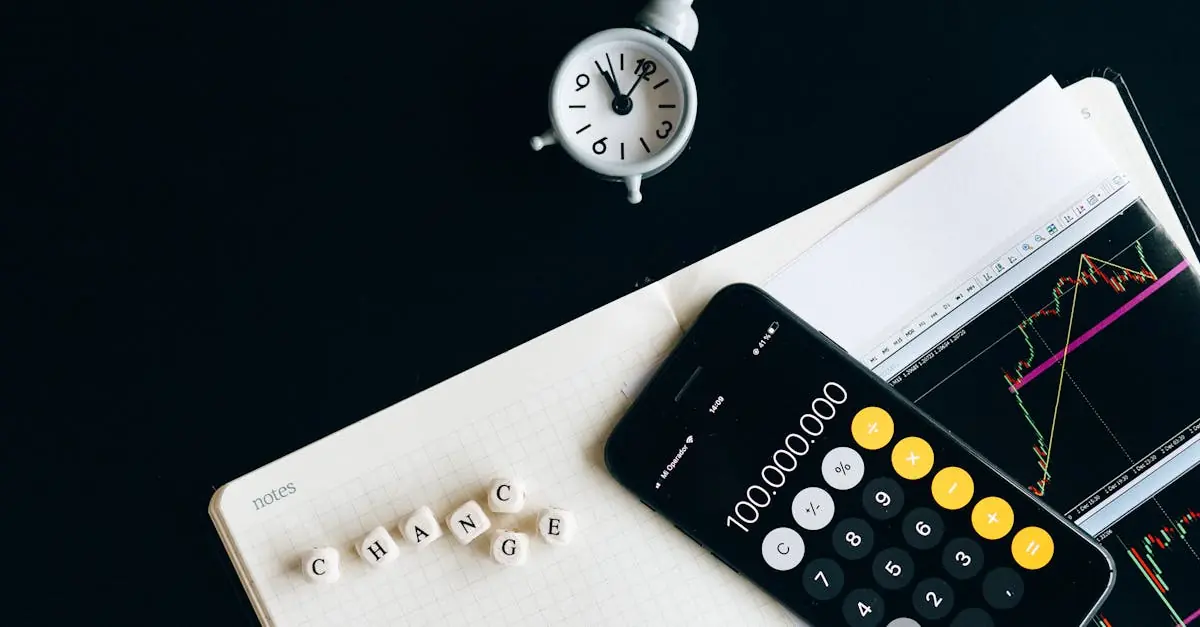Table of Contents
ToggleEver wondered how long it’s been since you last downloaded that quirky app that promised to make your cat sing? Or maybe you’re just curious about your app habits? Knowing when you last downloaded an app can help you declutter your digital life or reignite your love for that long-forgotten game.
Understanding App Download History
Tracking app download history provides useful insights into app usage and management. Knowing when an app was last downloaded can aid in organizing the device and rediscovering helpful applications.
Importance of Download History
Download history carries significance for users wanting to streamline their app collection. Unused apps can clutter devices, making it difficult to find frequently used tools. Recognizing the last download date encourages users to remove apps that no longer meet their needs. Awareness of download history also supports identifying popular apps, fostering nostalgia for previously enjoyed games or utilities. Users can benefit from revisiting these applications, especially when searching for something new or engaging.
Where to Find App Data
Finding app data on an iPhone can be straightforward. Users can check the App Store for purchase history, which displays downloaded apps. Tapping on the profile icon reveals the account settings, including purchase history details. Another method includes navigating to Settings and selecting ‘App Store.’ Scroll down to find options for checking updates and previously downloaded apps. Users can also utilize iTunes if available, providing a broader perspective on download history. Accessing this information assists in managing app collections and maintaining an organized digital space.
Steps to Check Last Download Time on iPhone
Checking the last download time of an app on an iPhone involves a few simple steps. Users can access either the App Store or Settings to find this information.
Using the App Store
Open the App Store and tap on your profile picture located at the top right corner. From the account menu, select “Purchased” to view a list of apps previously downloaded. Scroll through the purchased apps to see the last download date beside each app. Apps that were downloaded recently reflect the latest timestamp. This feature provides a straightforward way to track app download history and rediscover favorites.
Using Settings
Navigate to the Settings app on your iPhone. Scroll down and select “General,” then tap on “iPhone Storage.” This section shows a list of installed apps along with their storage usage. Tapping on any app reveals additional details like the date of last used. While this option doesn’t show download dates, it does indicate the most recent usage, helping to identify current app engagement and relevance. Both methods contribute to effective app management.
Additional Tips for Managing Apps
Managing apps enhances device performance and user experience. These practices can help maintain an organized and efficient digital space.
Regularly Checking Usage
Monitoring app usage fosters better management. Users can assess which apps contribute value by regularly checking usage statistics through Settings. Locate the “Screen Time” option to see the duration of app usage. Recognizing popular applications can guide decisions on retaining or removing them. It’s beneficial to revisit this data monthly; consistent evaluation helps keep devices clutter-free. Understanding patterns in usage also aids in discovering favorite apps that may have been overlooked.
Deleting Unused Apps
Removing unused apps frees up storage. Unneeded applications can take up significant space and slow down devices. Navigate to the home screen, press and hold the app icon, then select “Remove App” for easy deletion. Deleting apps that haven’t been used in months helps streamline the interface. Staying updated on storage space encourages the regular removal of apps that no longer serve a purpose. A lean app collection leads to quicker access to frequently used tools and enhances overall performance.
Troubleshooting Common Issues
Issues may arise when trying to see the last time an app was downloaded. Understanding these common problems helps users navigate app management successfully.
Missing Download Information
Sometimes, download information for certain apps may not appear. If an app is newly installed or recently updated, its download date may not display immediately in the App Store. Users can check the App Store’s purchase history for confirmation, but if the app was downloaded from a different account, that information remains inaccessible. Switching accounts can resolve missing data. Additionally, some apps are not displayed accurately due to temporary network issues, so refreshing the App Store or restarting the iPhone may help.
Inaccurate Download Times
Download times can also appear inaccurate at times. If an app was re-downloaded without removal, it might show an earlier date instead of the current one. This inconsistency can confuse users tracking their app history. Checking the usage statistics in Settings can provide clearer insights into app engagement. Some discrepancies originate from app data synchronization issues. Users can resolve this by ensuring their device is connected to the internet. Restarting the device frequently fixes minor glitches, restoring accurate download times.
Understanding the last time an app was downloaded can significantly enhance how users manage their digital space. By regularly reviewing app download history and usage statistics, individuals can identify which apps deserve a place on their devices and which ones can be removed. This practice not only declutters the device but also allows users to rediscover applications that once brought them joy or utility.
Staying proactive in app management leads to a more organized and efficient device experience. With the right tools and methods at their disposal, users can maintain a streamlined app collection that aligns with their current needs and preferences. Ultimately, a well-curated app library contributes to improved device performance and user satisfaction.




